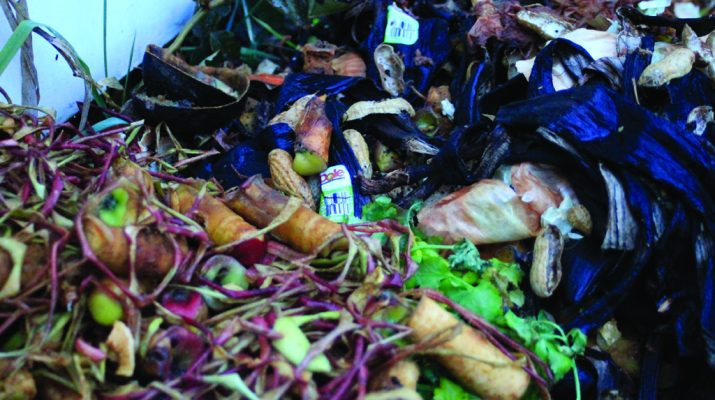Keep Alliance Beautiful is part of a process that flows in a circular motion (clockwise, maybe counter-clockwise if you like) as consumers purchase products made from the same materials they recycle. In the past, KAB has promoted another process that can also follow the same pattern – composting. The practice is not currently active among our programs though a speaker at the Keep Nebraska Beautiful Conference this fall piqued my interest in its potential in our area.
Brent Crampton of Hillside Solutions, which also offers trash and recycling services in the Omaha area, delved into the residential/commercial/industrial aspects of composting. “Gretna Sanitation started as a traditional hauler,” Brent explained. “Instead of opening a landfill they opened a composting facility. We put in new feedstocks the city of Omaha isn’t doing (in their compost) so they could sell it for a more market price.”
Inputs for Hillside’s compost flows from all over the metro area with partners as diverse as the Omaha zoo, hotels and hospitals.
One slide showed separate bins Hillside supplies with corresponding colors for landfill, recycling and compost. Brent helped set up a system for people and businesses to separate and achieve zero waste systems. Hillside is in more than 20 schools with lunch composting for 12,000-plus students. He showed a video telling how Omaha Central High School is composting at a 57-percent rate and has moved from 76 to 15 bags of trash a day, on average.
I do not have a “zero waste station,” as such, though we recycle and compost at my house. Concerning the latter, a former (covered) waste basket below the kitchen sink is dumped two to three times most weeks in the garden pile. Our year-round routine yields a healthy bit of dark organic material to work into the beds as we leave the probability of frost behind.
“We are processing 50,000 tons of material in our composting process,” Brent said. “We have industrial partners. We do windrow composting – 140-160 degrees inside, kills pathogens and bacteria . . . After a year of it sitting we screen it. We bag some, but people pull up and get it. . . . We have drop off sites around town for industrial compost. About 70 we dump once a week. Some commercial farms buy compost and they sell to restaurants who compost with Hillside.”
Hillside has also emphasized education so residents and businesses who take part know the rules. The cost for residential service in the “compost club” is $8.99 a month. More than 1,500 subscribers have access to drop off points in their area 24/7.
Years ago, the Alliance landfill produced many cubic yards of their own compost from the garden waste alley containers and rolloffs. Part of the difficulty in maintaining the program, from what I witnessed, came from people disregarding what was allowable in those containers. Machinery that turned the compost windrows became tangled in plastic bags, which do not break down. Unless Alliance residents see value in producing a useful product while reducing what goes into our landfill, the local compost scene will remain behind backyard fences.
Have a compost bucket, barrel or pile? Spread the word. This green option is something anyone can do. I hope in the near future our city government or a private entity will find it feasible to attempt commercial composting again.

